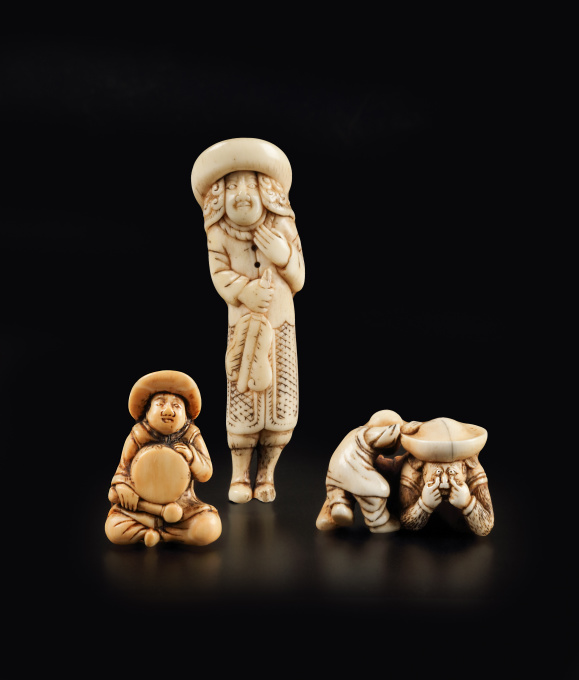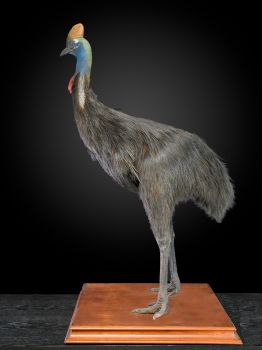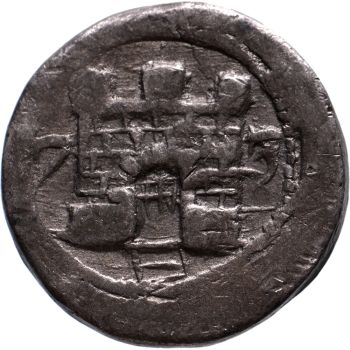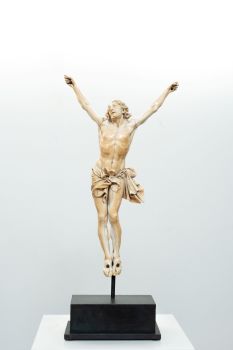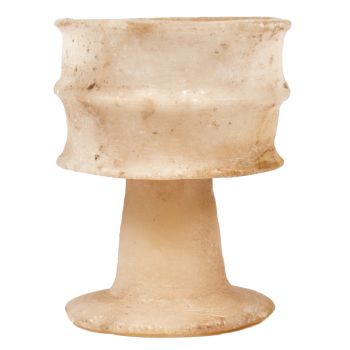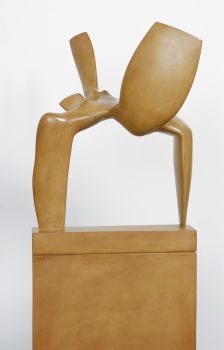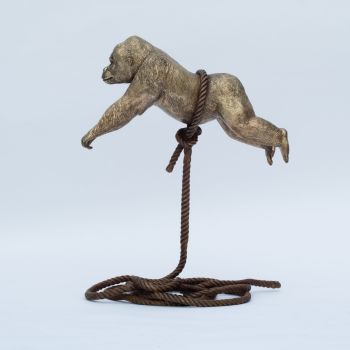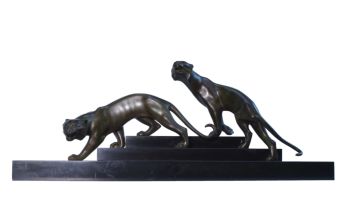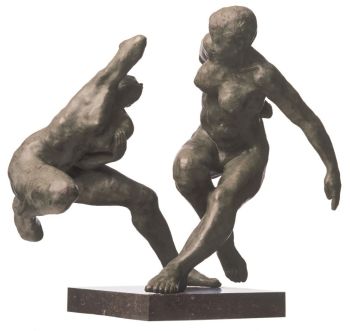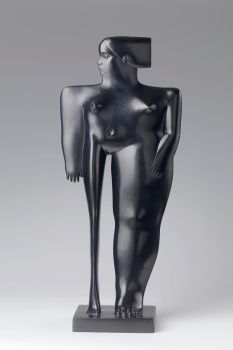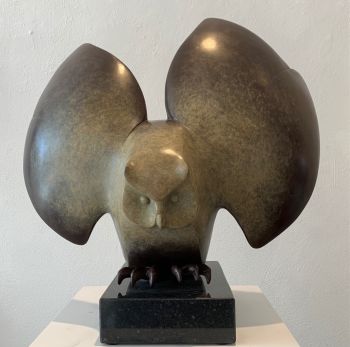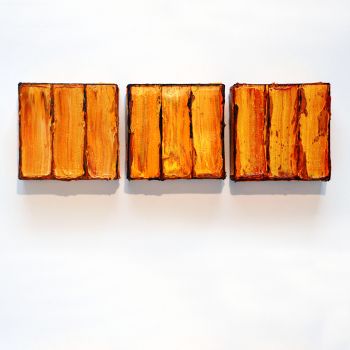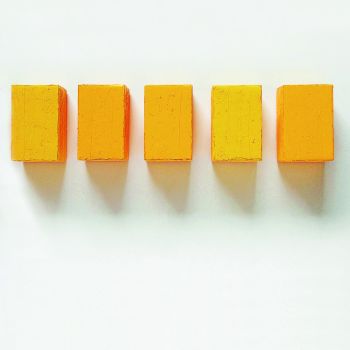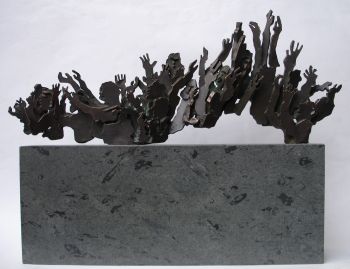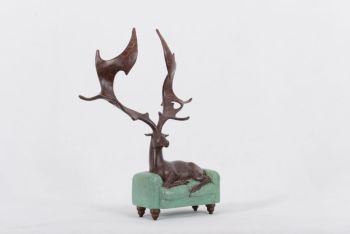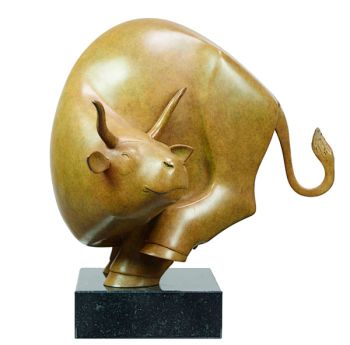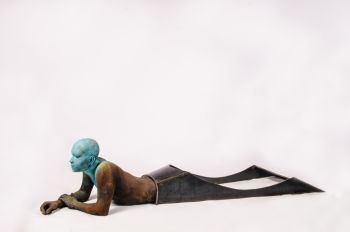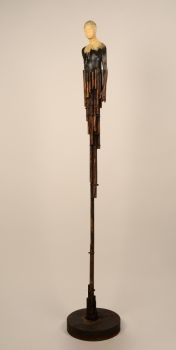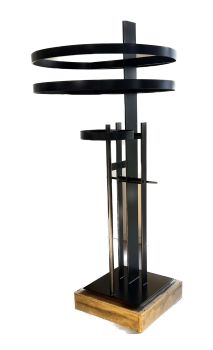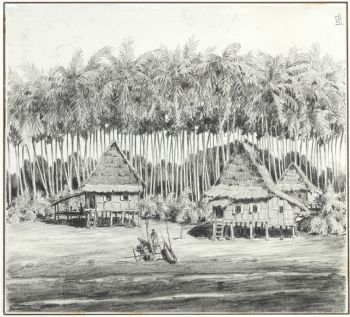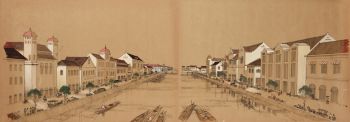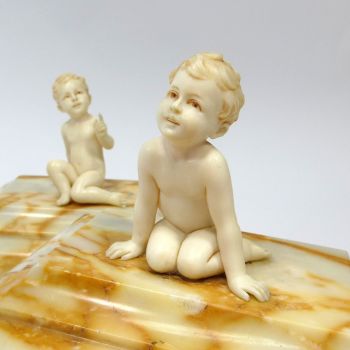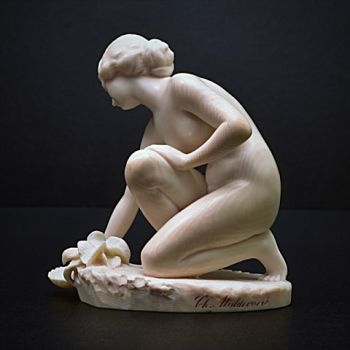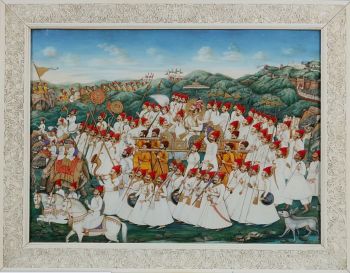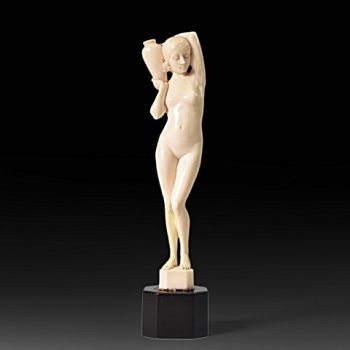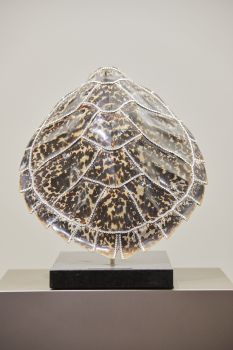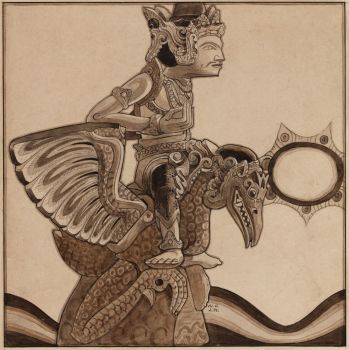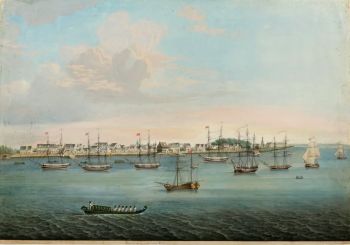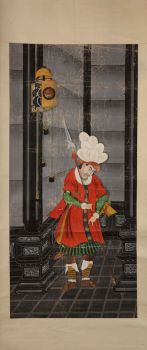Holländer in Miniatur 18th century
Unbekannter Künstler
Knochen
8 cm
Preis auf Anfrage
Zebregs & Röell - Fine Art - Antiques
- Über Kunstwerk
The portrayal of the Dutch by Japanese netsuke artists was popular in the 18th century and presents us with a fascinating insight into the Japanese perceptions of things foreign.
Foreigners, Ebisu, were considered bringers of good fortune, possessing magical power because they came from an unknown land and they came to be worshipped as deities. Netsuke of Dutchmen, therefore, were not only depictions of exotic appearances but probably had a talismanic function, such as warding off evil spirits, as well (Japan Envisions the West, 16th-19th Japanese Art from the Kobe City Museum).
Netsuke depicting Dutchmen constitute a clearly recognizable group of netsuke; Dutchmen are long, goggle-eyed, bow-legged, with a large nose and bad teeth. They wear a wide-brimmed hat with a feather or tassel, a bowler-hat or a seaman’s cap, a long coat decorated with Chinese motives of dragons, clouds or waves, over knickerbockers and long buttoned socks in low shoes
The portrayal of the Dutch by Japanese artists was popular from the late 18th and during most of the 19th century and presented us with a fascinating insight into the Japanese perception of things foreign. In many Japanese communities, mainly in the south, based on old myths and accessible wisdom, foreigners coming by ship from the South, were considered bringers of good fortune, possessing magical powers and coming from unknown southern lands. Netsuke of Dutchmen, therefore, were not only depictions of the exotic appearances of Westerners, but probably had talismanic functions as well, such as warding off evil and bringing wealth (for more netsuke of Dutchmen see Uit Verre Streken, November 2018). After Japan had been forced, in the 1850s, to open the country to Western powers, Japan quickly modernized, and the Japanese also started to adopt western clothing. This made an end to the use of and to a large extent to the making of netsuke and inro. - Über Künstler
Es kann vorkommen, dass ein Künstler oder Hersteller unbekannt ist.
Bei einigen Werken ist nicht zu bestimmen, von wem sie hergestellt wurden, oder sie wurden von (einer Gruppe von) Handwerkern hergestellt. Beispiele sind Statuen aus der Antike, Möbel, Spiegel oder Signaturen, die nicht klar oder lesbar sind, aber auch einige Werke sind überhaupt nicht signiert.
Außerdem finden Sie folgende Beschreibung:
•"Zugeschrieben …." Ihrer Meinung nach wohl zumindest teilweise ein Werk des Künstlers
•„Atelier von ….“ oder „Werkstatt von“ Ihrer Meinung nach eine Arbeit, die im Atelier oder in der Werkstatt des Künstlers, möglicherweise unter seiner Aufsicht, ausgeführt wurde
•„Kreis von ….“ Ihrer Meinung nach ein Werk aus der Zeit des Künstlers, das seinen Einfluss zeigt, eng mit dem Künstler verbunden, aber nicht unbedingt sein Schüler
•"Art von …." oder „Anhänger von ….“ Ihrer Meinung nach eine Arbeit, die im Stil des Künstlers ausgeführt wurde, aber nicht unbedingt von einem Schüler; kann zeitgenössisch oder fast zeitgenössisch sein
•„Art von ….“ Ihrer Meinung nach ein Werk im Stil des Künstlers, aber späteren Datums
•"Nach …." Ihrer Meinung nach eine Kopie (jegliches Datums) eines Werks des Künstlers
• „Unterzeichnet …“, „Datiert …“. oder „Beschriftet“ Ihrer Meinung nach wurde das Werk vom Künstler signiert/datiert/beschriftet. Das Hinzufügen eines Fragezeichens weist auf einen Zweifel hin
• „Mit Unterschrift …“, „Mit Datum …“, „Mit Aufschrift ….“ oder „Trägt Unterschrift/Datum/Beschriftung“ ihrer Meinung nach die Unterschrift/Datum/Beschriftung von jemand anderem als dem Künstler hinzugefügt wurde
Sind Sie daran interessiert, dieses Kunstwerk zu kaufen?
Artwork details
Related artworks
Unbekannter Künstler
RARE TAXIDERMY OF AN ADULT SOUTHERN CASSOWARY-CASUARIUS CASUARIUS1990 - 2000
Preis auf AnfrageSpectandum Gallery
1 - 4 / 12Rene Rietmeyer
"BUDAPEST, HUNGARY, MARCH 2005"2005
Preis auf AnfrageEuropean Cultural Centre Collection
1 - 4 / 24 Kuratiert von
Kuratiert vonDanny Bree
Unbekannter Künstler
A silver spoon commemorating Juff’ Margareta van Hoorn1656 - 1694
Preis auf AnfrageZebregs & Röell - Fine Art - Antiques
Unbekannter Künstler
Japanese transition-style lacquer coffer 1640 - 1650
Preis auf AnfrageZebregs & Röell - Fine Art - Antiques
Unbekannter Künstler
The bell of the VOC fortress in Jaffna, Sri Lanka1747
Preis auf AnfrageZebregs & Röell - Fine Art - Antiques
 Kuratiert von
Kuratiert vonDanny Bree
1 - 4 / 24Unbekannter Künstler
WICHTIGE UND SELTENE GROSSE INDISCHE 'COMPANY STYLE'-MALEREI AUF Elfenbein, die eine Parade darstell1850 - 1900
Preis auf AnfrageZebregs & Röell - Fine Art - Antiques
 Kuratiert von
Kuratiert vonDanny Bree
Unbekannter Künstler
EINE SAMMLUNG VON VIER SRI LANKAN IVORY BIBELKÄSTCHEN18th century
Preis auf AnfrageZebregs & Röell - Fine Art - Antiques
1 - 4 / 24Unbekannter Künstler
The Stamford Raffles Secretaires.1800 - 1813
Preis auf AnfrageZebregs & Röell - Fine Art - Antiques
Shiba Kokan
Gemälde eines Fantasy-Holländersearly 19th
Preis auf AnfrageZebregs & Röell - Fine Art - Antiques
1 - 4 / 12

